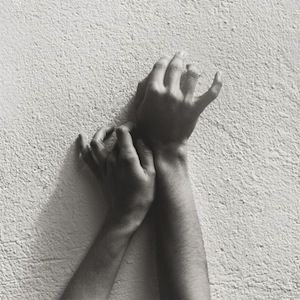Lucrecia Dalt Syzygy
Less than a year after the release of her sophomore album, Commotus, Berlin-based artist Lucrecia […]

Less than a year after the release of her sophomore album, Commotus, Berlin-based artist Lucrecia Dalt‘s new record, Syzygy, is another collection of sonic experimentation held together by philosophical theories, opaque atmosphere, and an overarching sense of unease. This time around, Dalt cites Italian author Italo Calvino and German philosopher/critical theorist Walter Benjamin, along with other thinkers and filmmakers, as key inspirations. Though it’s the most mature-sounding release in Dalt’s catalog so far, the record’s combination of ambient drones and disembodied vocals never quite coalesces around its stated influences. Instead, Syzygy is another opportunity for Dalt to play with a diverse array of concepts and further grow her considerable production talent.
An artist to whom Dalt often gets compared is Los Angeles-based experimental singer-songwriter Julia Holter. (Beginning next week, the two will actually be touring together in Europe.) Holter was featured on Commotus‘ “Silencio” and their music shares a similarly architectural sense of space, as Holter’s recent Loud City Song LP was partially inspired by the city of Los Angeles and Dalt was a civil engineer in Medellín, Colombia before she moved to Europe. Yet while Holter’s album was assembled with what sounds like the painstaking precision of a ship in a bottle, Dalt’s individual tracks are more more ungainly and less interested in symmetry. “Inframince,” for example, builds from cavernous rumbles and breathy whispers to a climax featuring three vocal sources (Dalt singing in Spanish, Catalan, and English) that come at the listener from a headphone-bending multitude of locations. It’s a stirring effort, albeit one that evolves more organically than mechanically. In the album’s press notes, Dalt says the song was inspired by Marcel Duchamp’s notion of “our most undefined moments,” such as the infinitesimally small space between two bodies. While it’s not a connection most listeners (or really anyone) would make by themselves, the oscillating sound mix is made more interesting by knowing its backstory.
Dalt composed Syzygy in a small apartment in Barcelona that was surrounded by a magnetic field emanating from the city’s metro system. Apparently, the interference caused her bass to malfunction, which inspired a new reliance on programmed synths and drones. During the writing process, she would play Bergman and Antonioni films, constructing her tracks according to the shifting moods of the movies. The parallels to film are easy to spot. “Volaverunt” plods along like an Ennio Morricone soundtrack reimagined by Holly Herndon (another artist with whom Dalt shares a lot of stylistic ground), and concludes with repetitive synth arpeggios that ratchet up the claustrophobic tension. “Soliloquios” similarly recalls spaghetti westerns, with a sweetly strummed guitar overlaid by percolating, high-pitched electronics. “Mirage,” the album’s final track, is a torch song that serves as the LP’s cathartic highpoint. Though Dalt’s dynamic nature seems contrary to the idea, a few more slow-burners in this vein would have been welcome.
Though it’s nine tracks and 32 minutes long, Syzygy often feels more like an extended EP than a full-length album. It’s bursting with enough conceptual fireworks to spend hours deconstructing and analyzing (especially for those who want to dive into the various philosophical and literary references), but the tracks themselves often feel more like conceptual art pieces than fully realized songs. Still, it’s a compelling effort that further solidifies Dalt as a fascinating producer to watch, even if the album is best experienced as an uneven whole rather than a collection of stellar individual songs. Fans of avant-garde electronic music and the more cerebral edges of experimental pop will be happy to have sought this one out.

